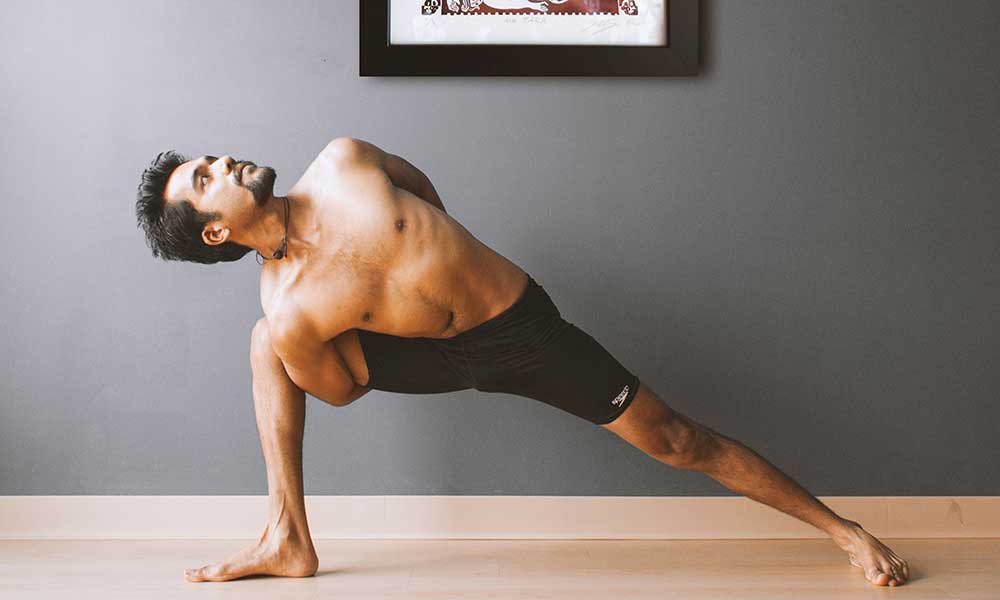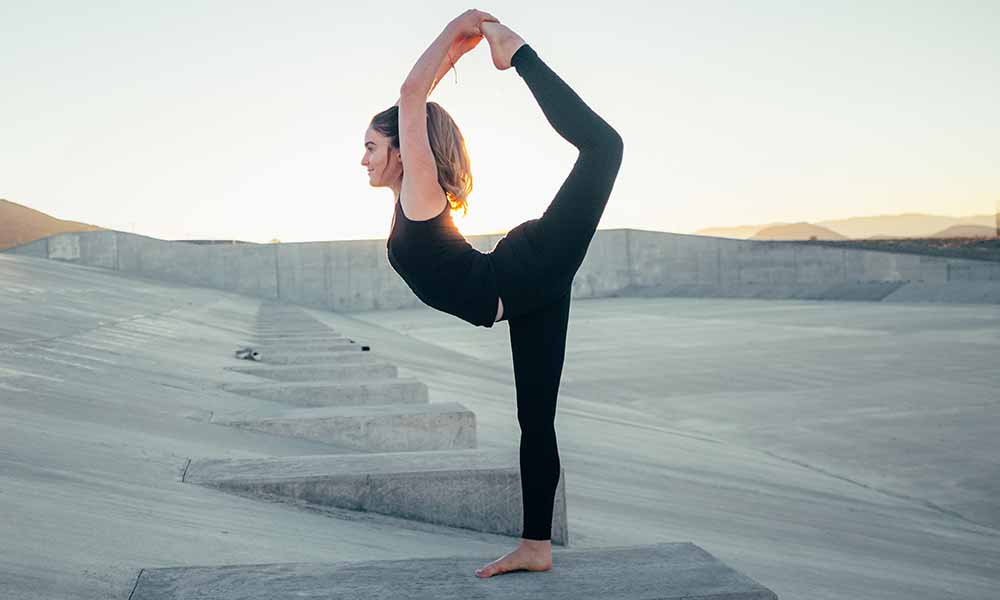Maybe you’re an avid yogi looking to continue your practice while pregnant. Perhaps you’ve never done yoga before, but are looking for ways to stay fit and relaxed during your pregnancy. No matter what reason you have for wanting to do yoga while pregnant, it’s likely you have some questions.
Your biggest question is probably, ‘Can I do yoga while pregnant?’ The short answer is yes. Prenatal yoga is a multifaceted exercise that includes gentle stretching, breathing techniques and mental centering. Just be sure to get clearance from your doctor before doing so.
While there are some poses you may want to avoid at this time, there are still some benefits to be had. Keep reading to learn more about what prenatal yoga can do for your body during pregnancy.
What are the benefits of prenatal yoga?
There is a lot of research to suggest that prenatal yoga is not only safe, but it can also provide you with a lot of physical and mental benefits.
Prenatal yoga has the ability to:
- Improve the quality of your sleep.
- Lower stress and anxiety.
- Increase muscle strength and endurance to prepare the body for childbirth.
- Enhance flexibility of the muscles.
- Soothe common side effects of pregnancy such as lower back pain, nausea, headaches and shortness of breath.
Having a baby is a major life event that comes with lots of ups and downs along the way. For moms to be choosing to take prenatal yoga classes at a studio, it provides a safe place to meet and bond with other pregnant women in your area.
What to Expect When You’re Expecting at a Prenatal Yoga Class
If you’re a regular at your 5 pm Vinyasa yoga class on Tuesdays and Wednesdays, you might be wondering what is going to change now that you’re pregnant.
To keep you from being alarmed, here is a breakdown of what you can expect at a prenatal yoga class:
- Breathing: Just like in any traditional yoga class, you’ll be taught how to focus on your breathing throughout the practice. These breathing techniques are especially valuable in prenatal yoga classes because they can help you prepare for the type of breathing you will need to do to manage your contractions during labor.
- Gentle stretching: When doing yoga for two, it’s important to go easy on your body so you don’t get injured. You will be encouraged to move gently and stretch different areas of your body lightly, such as your neck and arms, since you should have full range of motions in these areas.
- Postures: The yoga poses that are done in prenatal yoga are slightly different than the ones you would do in a regular yoga class since they are much gentler on the body. You may find small movements through poses that involve sitting, standing, or lying flat on the ground. Your yoga teacher might even provide props such as belts, a folded blanket, or cushions to provide support and comfort.
- Cool down and relaxation: The end of a yoga class is usually a time for relaxing and giving your body and mind a chance to relish in the moment and enjoy the positive effects that your practice has had on your body. The same goes for a prenatal yoga class. At the end of your class, you will relax your muscles and restore your resting heart rate and breathing rhythm. Your instructor might invite you to tune into the sound of your breath, pay close attention to the sensations in your body, be mindful of your thoughts and emotions, or even say a mantra silently to yourself to instill a state of self-awareness and tranquility.
First trimester prenatal yoga
Starting a prenatal yoga practice during your first trimester of pregnancy gives you an opportunity to set aside some much needed me-time that you can use to check in with your body and your emotions. During your prenatal yoga journey, it’s possible that you’ll even begin to dive deeper into your practice and explore other related topics such as meditations and the chakra system.
A well-bodied prenatal yoga routine can have a positive effect on you and your baby, while also giving you tools to navigate your childbearing journey and beyond.
Keep in mind that the type of prenatal yoga you do will shift throughout your pregnancy. While prenatal yoga is safe, try to adopt a less-is-more attitude as opposed to pushing your body to its limits. Your body will need a lot of tender love and care during pregnancy and you’ll want to make sure you take extra precautions to not cause harm to your or your baby. If you’re ever unsure about what poses are safe to do, talk with your doctor before attempting.
Each trimester, expectant moms will want to adjust your yoga practice to accommodate your changing body. Here are some of the yoga poses that will bring you support and calm during your first trimester:
- Vrksasana (Tree Pose): This standard balancing pose will help you feel grounded while building awareness throughout the body, improving alignment, posture and balance. It is a great pose for strengthening your back, abdominal muscles, and legs.
- Malasana (Garland Pose or Squat): This pose is perfect for pregnant women as it helps stretch out the hips while simultaneously strengthening the pelvic floor muscles. It can improve your posture by elongating the spine and boosting the digestive system.
- Lunge: During your first trimester, you’ll want to make sure that you are keeping the lower half of your body stretched and strengthened. Lunges help to lengthen the spine, open up the hips and strengthen the thigh muscles.
- Seated forward bend: This pose will help improve digestion, help you relax and bring your attention inward. You’ll get a nice stretch in the lower back as well, helping to alleviate tension.
First trimester prenatal yoga not only prepares your body for giving birth, but it can also provide mental benefits as well. You may notice an increase of energy while also feeling relaxed and at peace. If you stay on track with a regular prenatal yoga practice, you’ll notice an improvement in the quality of your sleep as well.
Practicing yoga during pregnancy will also help to combat some of the most common, negative side effects of pregnancy such as inflammation, morning sickness, headaches, and muscle tension. Many of the poses that are practiced in prenatal yoga increase blood flow which in turn reduces swelling.
Yoga in the third trimester
Once you’ve made it to the third trimester of pregnancy, your body has most likely changed tremendously from when you first found out you were pregnant. Most pregnant women will start to feel ready to give birth as their body and energy levels begin to slow down.
During this time, it is generally recommended to allow your body to shift as it needs to without putting extra pressure on yourself. Your growing baby will be changing a lot during this time as well. By this point in the pregnancy, your baby will start to gain weight and develop motor skills that he or she will need for its new life outside the womb.
Your baby will begin to position itself into a head-down position, which could take several weeks. Some babies, known as breech babies, never make the full rotation or manage to get into this position successfully and end up being born with their feet or butt facing down. Practicing prenatal yoga in the final trimester of your pregnancy can help your baby position itself correctly.
In the third trimester, most women will start to feel an increase of pressure in the pelvic areas as the baby drops into position. This adjustment can cause sharp pains in the bladder and pelvic area, sometimes known as “lightning crotch.” Staying active can help to combat these symptoms and is crucial in having a healthy pregnancy.
Prenatal yoga focuses on movement that makes you feel good, even on your lowest days. It is all about honoring your body and all of the hard work it is doing during this time.
Here are some of the poses that you can do in your final trimester:
- Sukhasana (easy pose): This pose will help you ease pain and swelling in the wrist as well as give you an opportunity to breathe mindfully.
- Utkatasana (wide chair pose): Long holds in chair pose are a great way to prepare your body for going into labor. Standing with your feet as wide as your hips will stretch and strengthen your hip joints.
- Viparita Karani (Legs up the wall): Normally this pose is done while lying on your back, but the prenatal yoga version of this pose is done with blocks, pillows and/or folded blankets under your back for support. This pose is great for increasing blood flow and circulation in the low body while allowing you to lay back and relax.
Yoga poses to avoid during pregnancy
When you are pregnant and practicing yoga, it’s very important to avoid any pose that puts pressure on your abdomen or vital organs.
Pregnant women should avoid lying down flat on their back in their third trimester. If you want to adjust poses to be safe so that you feel comfortable, always use props to support the upper back. Avoid doing any deep twists as these could also put pressure on your abdominals and vital organs.
Expectant mothers should not do hot yoga. It is very important that your core body temperature does not go above 102 degrees Fahrenheit. Extreme heat in the first trimester can impact fetal development and may even result in a miscarriage. High temperatures can also cause you to faint later on in pregnancy.
While prenatal yoga is widely considered safe and beneficial, you should always talk to your doctor if you have any health concerns or if you have never practiced yoga before.







